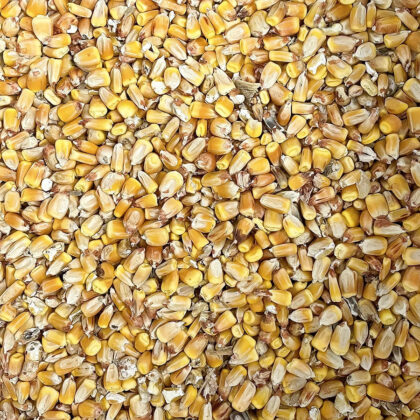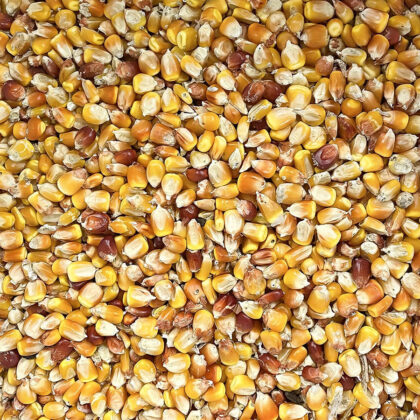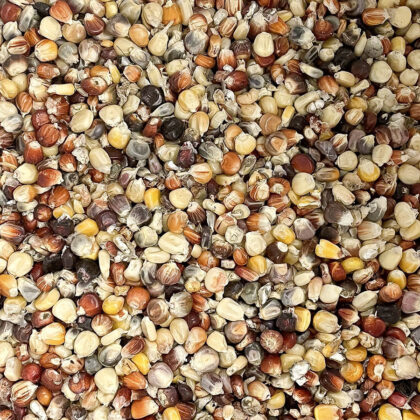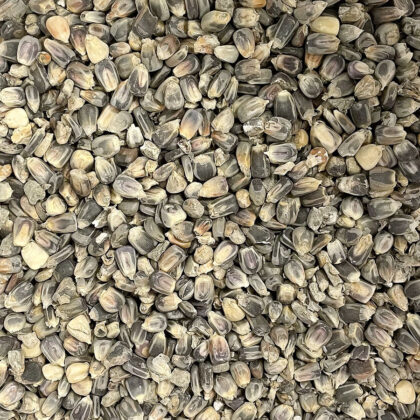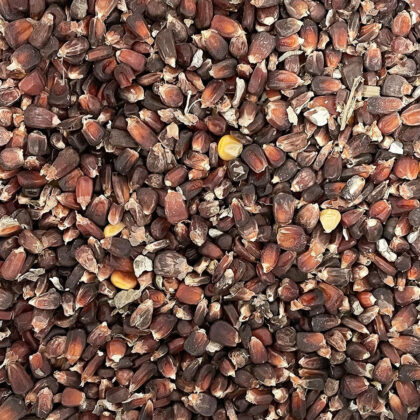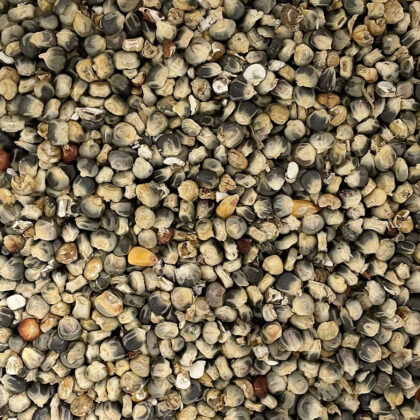Heirloom, specialty, and terroir-driven grains are drawing increased interest from distillers and whiskey connoisseurs alike. At the same time, with more distilleries and more whiskey, the market is also becoming more competitive. The need for a spirit with unique qualities is becoming more evident, and one way to stand apart is sourcing distinctive grains and maximizing their flavor potential.
But sourcing that grain is just the tip of the iceberg. Whiskey flavor can evolve at various processing steps, from mashing to barrel aging. Understanding how those steps interact with the flavor compounds in specialty grains is key to making smart, strategic choices about how to manipulate variables in the distillery and get the flavors you want out of distinctive ingredients.
The Importance of Phenolic Acids
Just like grapes for winemaking, cereal grains of the same variety grow variably in different locations. Soil composition and climate drastically change not just the yield but also the development of flavor compounds and flavor precursor compounds known as phenolic acids. Phenolic acids act as substrates to yeast, which convert them to other phenolic compounds during fermentation, providing new flavor and aroma compounds. While not all pathways are known, the most common one is the conversion of ferulic acid to 4-vinyl guaiacol (4-VG), which gives distinctive clove, smoke, and spicy character in beer and whiskey.
Phenolic acids are a type of polyphenol that are involved in a grain’s defense mechanisms against biotic and abiotic stress. The pathway of phenolic acid development is initiated by the growing environment and agronomics of the soil. Additionally, the genetic-environment relationships may result in large phenolic acid content fluctuation among cereal species and even cultivars of the same species. A study by Michigan State University shows that several different rye varieties grown in the same location had variable ferulic acid and resulting 4-VG content. An additional general trend in the data showed that a higher ferulic acid and 4-VG content correlated with higher protein levels (R2 = 0.6816) and lower spirit yield (R2 = 0.9024). This is something the research team will investigate in upcoming years.
The total phenolic acid content (TPC) of grain ranges from 600–2200 µg/gram. The most common phenolic acids in cereal grains include p-hydroxybenzoic acid, vanillic acid, caffeic acid, syringic acid, p-courmaric acid, ferulic acid, and o-courmaric acid. A study comparing the TPC of different types of grains found the highest in winter barley and popcorn, while the lowest was in wheat. The study did not include rye. The largest variability between varieties was found in wheat, while the lowest variability was found in corn and popcorn. However, not all of the potential phenolic acids end up soluble; some actually remain in a bound form in the cell wall of the grains. That means distillers need to make process choices if they want to include more phenolic acids in their grain-based spirits.
Mashing
Mashing considerations can influence the potential flavor of whiskey. Grains like wheat, corn, and barley vary slightly in their morphology, yet they all are composed of three main components: endosperm, germ, and bran. The bran is composed of many layers, including the cell wall and the aleurone layer. Starch is stored in the endosperm of the grain, which is not readily accessible because of the protective cell wall of the grain. The primary goal of mashing is to release the starches from the cereal grain and convert the starch into fermentable sugars for the yeast to ferment into alcohol.
Just past the cell wall is the aleurone layer, where the phenolic acids are found. To access the starch and the phenolic acids, the grain must go through a gelatinization process. During gelatinization, hot water is absorbed through the cell wall into granules, causing the starch to swell so large that it breaks the cell wall and exposes the grain contents to the surrounding water. Each grain has a different gelatinization temperature, which is crucial to rest at to allow the exposure of the starch.
Once all the starch is accessible, liquefaction can begin by the enzyme α-amylase. Liquefaction is the process in which the large polymeric starch molecules are broken down into shorter chain sugars. Mashing efficiency is a parameter that many distillers are aware of because increasing the mash efficiency means increasing the alcoholic yield. What is slightly overlooked, however, is considering the total amount of extracted phenols and other potential flavor into the grain.
Phenolic acids, as discussed earlier, are bound in the aleurone layer of the grain and need to be “freed.” Studies have illustrated the best methods to determine free and bound phenolic acids in a laboratory setting; these studies suggest the phenolic acids are found in free, conjugated, or insoluble bound forms. One study found that base hydrolysis (3M, 90 min) resulted in the highest extricability of phenolic acids, recovering 88–108% of cereal phenolic acids. Unfortunately, this method is not directly applicable to a distiller’s mash regime, but it gives reason for future studies on perhaps marrying the mashing techniques for increasing phenolic acid extraction and flavor development of whiskey.
One mashing parameter to consider is additional “flavor” rests. For example, the enzyme that catalyzes the release of ferulic acid from grain is the most active at 43°C (109°F). A rest at this temperature is essential when brewing beers like hefeweizens, which are known to have the clove character. Adding this rest at the tail end of the mashing process may promote the release of higher ferulic acid and increase the flavor potential of the grain.
Yeast and Fermentation
Fermentation parameters also influence the final flavor of the whiskey. There are 1,000 sub types of Saccharomyces cerevisiae, all with slightly different fermentation behavior. While the main goal of fermentation is to convert sugars into ethanol, yeast also produces many other metabolites that add flavor to the mash and eventual distillate. Yeast have the ability to consume sugar, fatty acids, and amino acids from the mash, and, through various metabolic pathways, they secrete fatty and organic acids, esters, aldehydes, ketones, phenols, glycerol, and alcohols.
Yeast convert free phenolic acids into esters and other flavor and aroma compounds during fermentation. Esters are often desirably fruity and aromatic compounds that add complexity and flavor to whiskey. One important example is the production of 4-VG from ferulic acid. 4-VG is a methylated phenol, which gives a spicy, clove character and is found commonly in whiskey and beer. As discussed earlier, the precursor to 4-VG is a phenolic acid, ferulic acid, which is found in the grain. So, the more ferulic acid that was extracted from the grain in the mash, the more potential spicy and clove character would be seen in the fermented mash and eventual whiskey distillate.
Yeast can be categorized as phenolic off-flavor positive (POF+) or negative (POF-). Yeast that are POF+ have the ability to synthesize phenolic flavor and aroma compounds while POF- yeast do not have this ability. While the term “off-flavor” has a history of negative connotations, we actually want yeast to create many compounds beyond simply ethanol, because those compounds add flavor, aroma, and complexity to whiskey. Yeast manufacturers may not directly indicate whether a yeast strain is POF+ or POF-, but upon consultation should be able to characterize the types and extent of flavor compounds created by specific yeast strains. Metabolite production by yeast also can be manipulated by fermentation traits such as aeration level, head pressure, pitching rate, and temperature. In general, any parameter that minimizes yeast growth will enhance ester production. This includes decreased aeration (oxygen), increased starting gravity, colder fermentation temperatures, decreased pressure, and decreased pitching rate.
Another class of compounds important for potential whiskey flavor are higher alcohols, which participate in reactions in barrel aging. The many higher alcohols common in fermented products include n-propanol, 2-methylpropanol, 2-methylbutanol, 3-methylbutanol, and butanol. Higher alcohols are formed via multiple pathways in yeast. In general, higher alcohols increase with increased yeast growth. This includes higher fermentation and pitching temperature, increased or secondary aeration, and higher wort concentrations.
Distillation
Distillation itself also influences the flavor of whiskey: The same low wines distilled on three different pot stills would produce three different whiskeys. Distillers have a very important job in capturing all the positive flavor and aroma compounds that came from the grain and were created during fermentation, while removing the negative compounds. During batch distillation, the distillate is constantly changing from the beginning of the hearts through the end of the hearts. Keeping this in mind, the distiller has variables at hand to ensure they capture all the flavor they have created up to this point.
The heating source and intensity is one variable that can be controlled by the distiller. The term “low and slow” is a term often used when distilling spirits. Heating at a low rate resulting in a slow distillate rate allows the distiller to taste subtle changes more easily. By contrast, if the distillate rate is rapid, caused by high heating, all the flavor compounds will more than likely come through the condenser at the same time, making cuts more difficult and unclear.
Tray quantity and rectification can also change the spirit. Often, batch pot columns contain three or fewer trays. The presence or absence of a tray alters the amount of separation of the ethanol, flavor and aroma compounds (congeners), and water. The more trays (rectification), the purer the ethanol and the lower the other congeners. Reflux, or cooling water flow to any partial condensers, changes the rectification in the same manner. The more reflux, the purer the ethanol. There is a delicate balance between a pure-as-possible distillate (vodka) and a distillate that contains some wanted congeners.
Maturation
Aging has arguably the most dramatic effect on whiskey. Aging has three primary methods of changing the whiskey: evaporation, extraction, and reactions. A whiskey distillate contains ethanol, water, higher alcohols, esters, and other congeners. These compounds are an accumulation of what was extracted from the grain, what reactions occurred in the fermentation, and what was selected to remain in the hearts to become aged. The congeners remaining in the distillate have the ability to change the whiskey even more during aging by participating in evaporation, extraction, and reactions.
Over time, the smallest molecules, including water and ethanol, evaporate. Evaporation on average is 3% per year, but this is highly dependent on aging conditions including wood type, humidity, and temperature. The removal of water also concentrates the larger compounds in the whiskey, sometimes taking them from below threshold taste and odor concentration to above threshold, giving the distiller a more complex spirit.
There is also extraction of lignin, tannins, and hemicelluloses from the wood as well as flavor and color compounds created during the barrel charring process. Oxygen is able to permeate the wood and catalyze a number of reactions in the barrel. One example is ethanol reacting with lignin and, via acid hydrolysis, forming aromatic aldehydes. Wood sugars are also hydrolyzed from the hemicelluloses of the wood, causing the whiskey distillate to become sweeter. The type of wood and the extent of charring influence the reactions that occur in the barrel and, of course, the flavor of the resulting whiskey.
The ongoing conversations among farmers, maltsters, coopers, distillers, and consumers will of course push the use of different types of grains to become more widely utilized in whiskey production. But ultimately, it is up to the distiller to utilize and maximize the flavor potential of each unique grain from each unique location at each unique facility.

